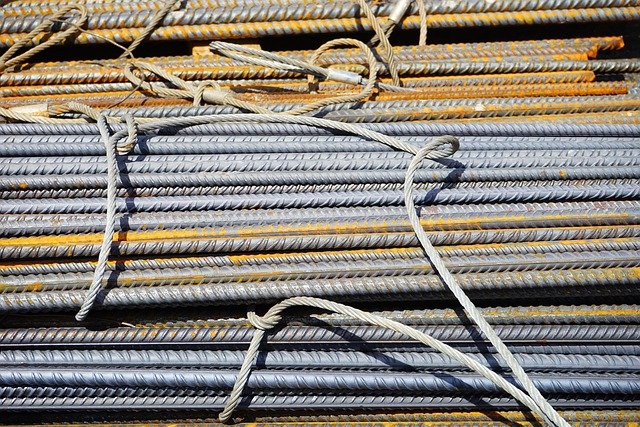Comparing Environmental Footprints and Ownership Costs Across Supply Technologies
This article examines how different supply technologies for air compression affect environmental footprints and long-term ownership costs. It outlines how choices across machines, installation in a building or facility, and operational practices influence energy efficiency, maintenance needs, and lifecycle impacts. Readers will find practical cost benchmarks and a comparison of representative providers and product types to inform procurement and facility planning.

Air compression is core to many industrial, commercial, and property applications—from powering tools and protective equipment to running sprinklers or pneumatic packing lines in a supply chain. The environmental footprint of a compressor depends on design, duty cycle, and installation context. Ownership costs include purchase price, installation (for example in a building or facility), routine service, and the energy consumed over years of operation. Balancing energy efficiency, reliability, and upfront investment can reduce lifetime emissions and total cost of ownership when decisions consider both machinery and operational patterns.
Appliances and machines: footprint differences
Different types of compressors—portable piston units, oil-lubricated reciprocating machines, and rotary screw machines—have distinct efficiency and emissions profiles. Portable models used for garden tasks or light workshop use are typically less efficient under continuous duty, while rotary screw units designed for industry run more efficiently at steady loads, reducing energy consumption per unit of compressed air. Material choices such as steel housings and the presence of oil separators affect disposal and recycling. Matching the compressor type to the application (packing, tool operation, or plant sensors and actuators) reduces wasted energy and environmental impact.
How does energy efficiency affect facility costs?
Energy efficiency is often the dominant operational cost over a compressor’s life. Compressors operating in a building or facility continuously can account for a significant share of electricity use. Variable-speed drive (VSD) compressors and properly sized storage receivers reduce start-stop cycles and peak demand, lowering electricity consumption. Regular maintenance—filter changes, leak detection, and monitoring sensors—keeps systems near rated efficiency. For property owners and facility managers, assessing load profiles and integrating energy-efficient machines with controls often yields measurable reductions in running costs and carbon intensity.
What role do sensors and protective equipment play?
Sensors and control systems enable predictive maintenance and better energy management. Flow and pressure sensors, combined with simple packing or predictive analytics, can flag leaks, inefficient cycling, or failing components before major repairs are needed. Protective equipment such as adequate filtration and oil-water separators prevent contamination of downstream appliances like water heaters, sprinklers, or delicate packing systems. Investing in sensors and protective items may increase upfront costs but typically lowers total ownership costs by preventing equipment damage and reducing downtime in industrial or commercial settings.
How do supply chain and steel impact environmental cost?
Supply chain choices—material sourcing, manufacturing location, and packaging—contribute to a compressor’s embodied footprint. Steel components and robust housings increase durability but also raise upstream emissions during production. Local services and sourcing in your area can reduce transportation emissions and lead times. Consideration of spare parts availability, supplier innovation in materials and packaging, and the recyclability of components affects lifecycle impacts. Systems designed for modular repair often extend usable life and reduce the need for full-system replacements in industry settings.
Ownership costs and equipment pricing comparison
Real-world ownership costs combine purchase price, installation, energy, maintenance, and downtime risk. Below is a representative comparison of common compressor product types and providers to illustrate typical cost bands and use cases. These examples reflect widely sold models and categories rather than specific promotional offers; they focus on entry-level portable units through larger fixed rotary screw machines used in medium-sized facilities.
| Product/Service | Provider | Cost Estimation |
|---|---|---|
| Portable pancake/piston compressor (1–2 HP) | Porter-Cable / similar | $100–$300 |
| Stationary oil-free piston (2–5 HP) | DeWalt / Ingersoll Rand small models | $800–$2,500 |
| Two-stage stationary compressor (10–15 HP) | Quincy / Ingersoll Rand | $6,000–$15,000 |
| Rotary screw compressor (20–50 HP, industrial) | Atlas Copco / Sullair | $20,000–$60,000 |
Prices, rates, or cost estimates mentioned in this article are based on the latest available information but may change over time. Independent research is advised before making financial decisions.
Beyond purchase price, plan for installation (mounting, piping, electrical), periodic maintenance (filters, oil changes for lubricated units), and energy use. Leak detection and proper storage capacity reduce waste; retrofitting controls or upgrading to VSD models is a common mid-life investment to cut energy bills. Warranty terms and the availability of spare parts from local services also affect lifecycle costs and downtime exposure.
Conclusion
Comparing environmental footprints and ownership costs requires looking beyond sticker price. Machine selection (portable vs. rotary screw), energy efficiency features, sensors and protective equipment, and supply chain considerations all shape lifecycle impacts. Using benchmark cost ranges, evaluating local services for installation and maintenance, and planning for energy-efficient operation help align procurement decisions with facility needs and sustainability goals. Thoughtful sizing and maintenance typically yield lower total costs and smaller environmental footprints over a compressor’s service life.





